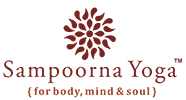Pregnancy Yoga – Third Trimester
The Third Trimester is the final period of Pregnancy from week 28 to the birth. It is a time for a more restful and relaxing practice to retain energy..
Cautions:
- Listen to your body. Do what feels right for your body and take rests when you need to. Before pregnancy you may have worked hard with exercise and pushed the body to limits but now is a time to use yoga and exercise to keep the body moving but not to push yourself too hard. Pregnancy is not the time to try challenging new poses
- As the baby grows, lying on the back can result in the baby’s weight placing pressure on the vena cava, restricting the flow of blood to the mother’s heart (usually around week 25 but take notice of any numbness or tingling when lying on the back). Prop up the spine to 45 degrees or roll onto the side of the body when in relaxation
- Breath – use relaxed, ujjayi breath. Do not use breath that creates a pumping action in the stomach such as Kapalabhati
- No jolting movements such as jumping into asanas
- Avoid intense abdominal work (e.g. holding plank for long lengths of time, boat poses or other more intensive core exercises)
- Minimise twisting, particularly around the waist or lower spine. Concentrate twisting to the upper back. Generally minimise any strain on twisting and just do gentle movement
- Avoid backbends
- Relaxin hormone levels are higher so the ligaments in the body are softer so avoid very forced or deep stretches
- Inversions and poses such as downward dog (Adho Mukha Svanasana) could cause the baby to be breech
- You can use a chair to support standing and sitting asanas
- You may want to avoid balances now as the balance in the body will be different with the extra weight. Any risk of falling should be avoided
- It is advisable to discuss doing a yoga practice with your doctor or midwife so that they can assess your individual circumstances.
Good areas of focus:
Standing asanas (for leg strength, hip openers):
- Tree (Vrksasana)
- Eagle (Garudasana)
- Low Lunge (Anjanesyasana)
- Crescent Pose (Ashta Chandrasana)
- Warrior I (Virabhadrasana I)
- Warrior II (Virabhadrasana II)
- Triangle (Utthita Trikonasana)
- Extended side angle (Utthita Parsvakonasana)
Birthing visualisations such as squatting and hip opener positions.
Relaxation:
Prop up the spine to 45 degrees or roll onto the side of the body when in relaxation, once there is more risk with lying on the back. For example when in corpse (savasana) or reclining butterfly (supta baddha konasana).
Related Articles:
- Yoga in Pregnancy – First Trimester
- Yoga in Pregnancy – Second Trimester
- Yoga in Pregnancy – Third Trimester (this is the third article in this series)
Written by Sarah Williams. Sarah is a Qualified Yoga Teacher based in London with an online presence on Instagram and Facebook. She also blogs about yoga and health & well being topics on her website. Sarah’s focus is Vinyasa Flow, Hatha and Ashtanga styles of yoga and she completed part of her training in India. https://sarahlucyyoga.wixsite.com/yoga, @sarahlucyyoga
She has completed her from Sampoorna Yoga Goa. If interested in Yoga Teacher Training in India please browse our Teacher Training page Yoga Teacher Training Courses .
YOGA ALLIANCE REGISTERED YOGA TEACHER TRAINING COURSES

Sampoorna Yoga Teacher Training School has been a registered international yoga school with Yoga Alliance, holding RYS-200, RYS-300, RYS-500, and YACEP designations since 2009. Its online and in-person Yoga Teacher Training Courses and Certifications are recognized and accepted worldwide, enabling all graduates to teach globally. Upon course completion, participants receive a 200-Hour, 300-Hour, or 50-Hour Yoga Teacher Training Certification, allowing registration as RYTs (Registered Yoga Teachers) with Yoga Alliance. Our Yoga Teacher Training Certificate Courses empower you to teach legally in any country, whether you choose to register with Yoga Alliance registration or not.

